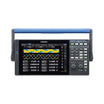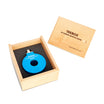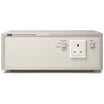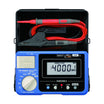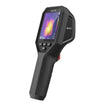
Multimedia
The customer’s expectation when it comes to multimedia and communication systems in a modern vehicle are very high. The sound quality must be good and any features like voice control or hands-free must work perfectly. Most development is done at the supplier side and fine-tuning is done in the vehicle. The entertainment system can also have a secondary task, i.e. active noise control (ANC) to reduce powertrain or road noise by creating an antiphase sound. This obviously needs careful tuning. The same active system can also add desirable sounds to improve engine sound quality at certain driving conditions.
ACOUSTIC TEST TYPES WITHIN MULTIMEDIA TESTING
System testing is done in a quiet environment, preferably a hemi-anechoic chamber. Microphone arrays or artificial heads are used for measurements of the frequency response from the entertainment system. Artificial heads can also be used for recordings to be used for subjective comparisons. Speed-dependent volume and equalization tuning needs to be measured and verified in combination with road noise measurement data. Testing includes verification of frequency response, sound field and sound quality, and is done both with measurements and with subjective evaluation.
Challenges common to multimedia testing
The entertainment system performance is typically something everybody has an opinion about. This means that the correlation between the subjective experience and the objective measurements is important. Comparisons between subjective evaluation protocols and measurements for different settings is of course a useful method for the development team to capture the progress. Binaural recordings can also be used for blind tests.
The expected future with autonomous vehicles means that multimedia systems will be given even more significance to enhance the travel experience.
- Testing time should be short since the access to prototypes is limited.
- Microphone positioning should be done fast and easy, and in a way to record repeatable results.
- The microphones should be placed so that they minimize structure-borne sound.
- Microphone holders and cables should not introduce any rattling noise.
- The installation should be safe for the test engineer to perform during vehicle testing.
- Calibration verification should be easy to perform.
The transducers have been designed to withstand exposure to harsh environmental conditions such as strong vibrations, shock, drop, extreme temperatures and wet or dusty conditions without sacrificing performance or lifetime.
Selecting the right microphone
Evaluation at test driving will be the final verification. Microphones used to measure frequency response must be robust. Random-incidence microphones with a frequency response of at least 20 Hz – 20 kHz are most often used.


